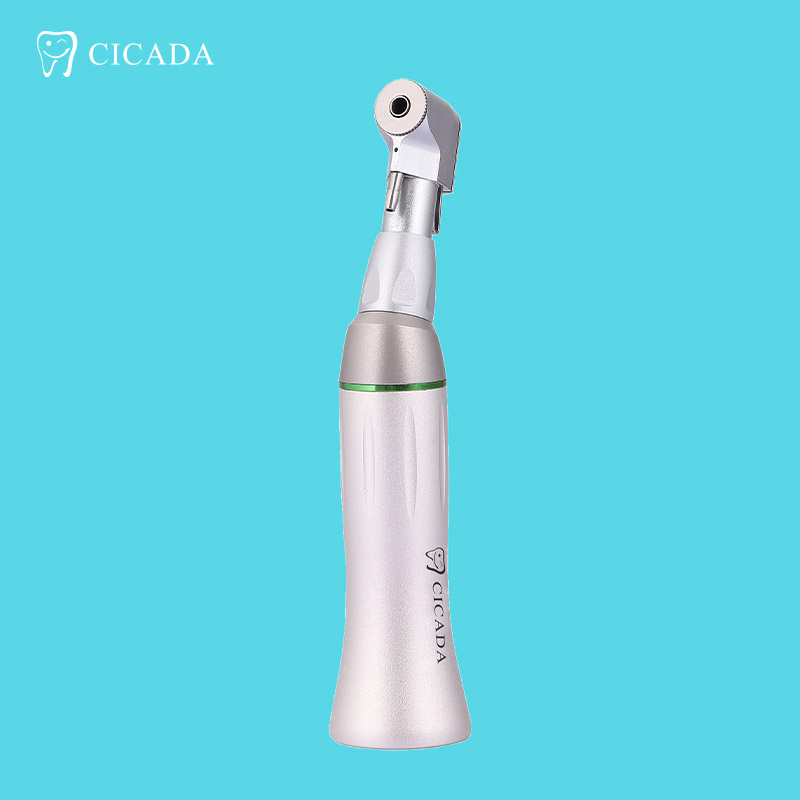In the rapidly evolving field of dentistry, the introduction of advanced tools has changed how dental procedures are performed. Among these innovations, implant handpieces stand out as essential instruments that enhance precision and improve patient care during dental implant surgeries. These specialized devices are designed to facilitate the accurate placement of implants, ensuring optimal outcomes for patients.
Understanding Implant Handpieces
An implant handpiece is a motorized dental tool specifically engineered for drilling into the jawbone to place dental implants. These handpieces can be powered by air, electricity, or batteries, each offering unique advantages. The primary function of an implant handpiece is to provide precise control over the drilling process, which is crucial for the successful placement of implants.
CICADA Implant Handpiece Latch Type
Enhancing Precision in Implant Procedures
The integration of implant handpieces into dental practice has significantly improved the precision of implant placements. Traditional methods often relied on manual tools, which could lead to inconsistencies and errors during surgery. In contrast, modern implant handpieces allow for:
Accurate Drilling: These devices are designed to drill at specific angles and depths, minimizing the risk of damaging surrounding tissues or vital anatomical structures.
Controlled Speed and Torque: Many implant handpieces feature adjustable speed and torque settings, enabling dentists to tailor their approach based on individual patient needs and bone quality.
Reduced Surgical Time: The efficiency of implant handpieces contributes to shorter surgical times, which not only benefits the dentist by allowing them to see more patients but also enhances patient comfort by reducing time spent in the dental chair.
Improving Patient Care
The advancements in implant handpiece technology have a direct impact on patient care. By facilitating more precise procedures, these tools contribute to:
Minimized Discomfort: With enhanced precision and reduced surgical times, patients experience less discomfort during and after procedures. This leads to a more positive overall experience.
Faster Recovery Times: Accurate placements reduce trauma to surrounding tissues, promoting quicker healing and recovery for patients. This is particularly important in today's fast-paced world where patients seek efficient solutions.
Higher Success Rates: The use of high-quality implant handpieces correlates with improved success rates for dental implants. Precise placement ensures better osseointegration—the process by which the implant fuses with the bone—leading to more predictable outcomes.
Types of Implant Handpieces
There are several types of implant handpieces available in the market today:
Air-Driven Handpieces: Generally more affordable but may lack the precision required for complex cases.
Electric Handpieces: Offer superior torque control and are preferred for their reliability and consistency in performance.
Battery-Powered Handpieces: Provide portability and ease of use but can be more expensive and require regular charging.
Each type has its own set of advantages and is suited for different clinical scenarios, making it essential for dental professionals to select the right tool based on their specific needs.
Key Features and Innovations
Recent advancements in implant handpiece technology include features that further enhance their functionality:
LED Lighting: Many modern handpieces come equipped with built-in LED lights that illuminate the surgical site, improving visibility during procedures.
Ergonomic Design: Advanced models are designed with ergonomics in mind, reducing fatigue during long procedures and allowing for better maneuverability.
Compatibility with Irrigation Systems: High-quality implant handpieces are compatible with various irrigation systems, which help cool the drill bit during procedures and minimize heat generation that can harm bone tissue.
Considerations When Choosing an Implant Handpiece
When selecting an implant handpiece, consider the following factors:
Type of Implants Used: Different implants may necessitate specific handpiece types.
Size and Ergonomics: Ensure the handpiece fits comfortably in your hand to reduce fatigue during extended use.
Power Source: Choose between air-driven, electric, or battery-powered based on your practice's requirements.
Cost: Prices can vary significantly; assess your budget against the features offered by different models while considering long-term maintenance costs.
In conclusion, implant handpieces play a pivotal role in modern dentistry by enhancing precision and improving patient care during dental implant procedures. Their ability to provide accurate drilling, controlled speed, and reduced surgical time makes them indispensable tools in contemporary dental practices. As technology continues to advance, we can expect further innovations in implant handpiece design that will continue to elevate standards in dental care, ultimately benefiting both practitioners and patients alike.




